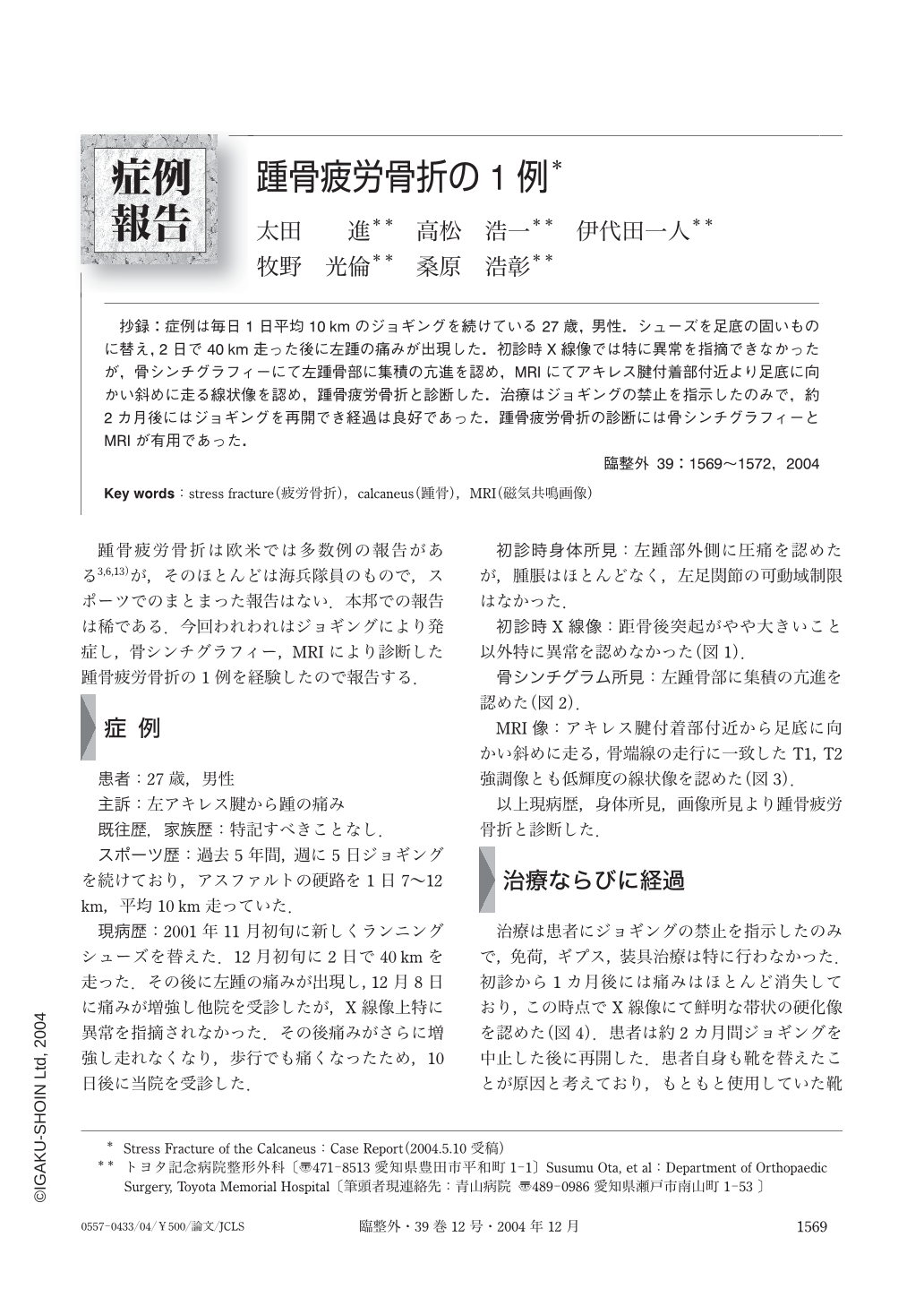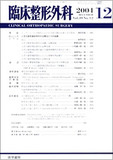Japanese
English
- 有料閲覧
- Abstract 文献概要
- 1ページ目 Look Inside
抄録:症例は毎日1日平均10kmのジョギングを続けている27歳,男性.シューズを足底の固いものに替え,2日で40km走った後に左踵の痛みが出現した.初診時X線像では特に異常を指摘できなかったが,骨シンチグラフィーにて左踵骨部に集積の亢進を認め,MRIにてアキレス腱付着部付近より足底に向かい斜めに走る線状像を認め,踵骨疲労骨折と診断した.治療はジョギングの禁止を指示したのみで,約2カ月後にはジョギングを再開でき経過は良好であった.踵骨疲労骨折の診断には骨シンチグラフィーとMRIが有用であった.
A case of calcaneal stress fracture diagnosed by bone scintigraphy and MRI is reported. A 27-year-old male who ran 10km every day complained of left heel pain after switching to shoes with harder soles. Examination of the initial radiograph revealed no abnormal findings, but a bone scan showed increased tracer uptake in the posterior portion of the left calcaneus. MRI was performed, and the T1-weighted sagittal image showed a linear hypointense signal traversing the body of the calcaneus. Calcaneal stress fracture was diagnosed, and the patient was advised to stop running. Radiographs one month later revealed a classic sclerotic band, and the heel pain has resolved. After a 2-month break, the patient resumed running. Our findings emphasize the value of MRI in the early diagnosis of calcaneal stress fracture.

Copyright © 2004, Igaku-Shoin Ltd. All rights reserved.


